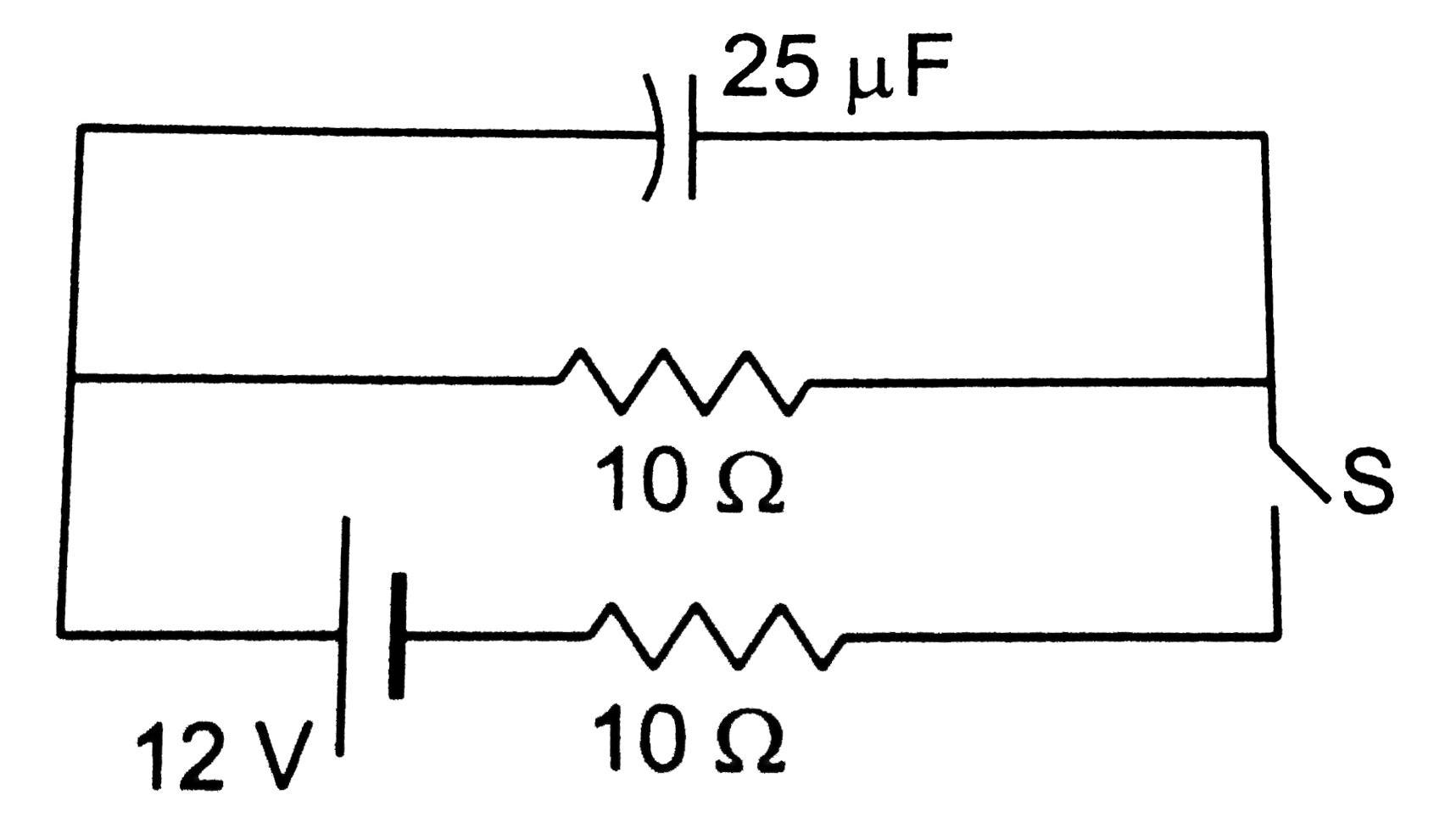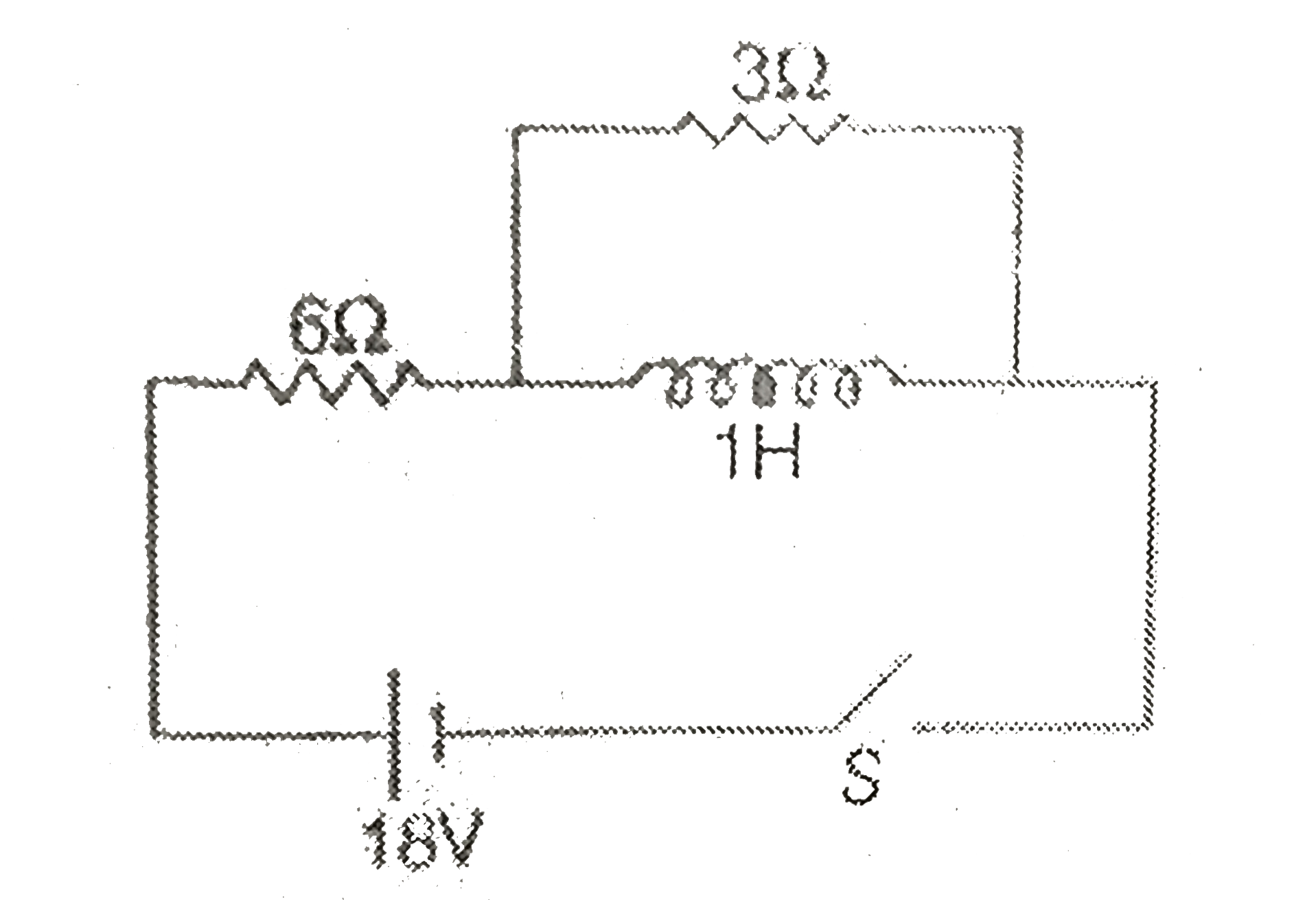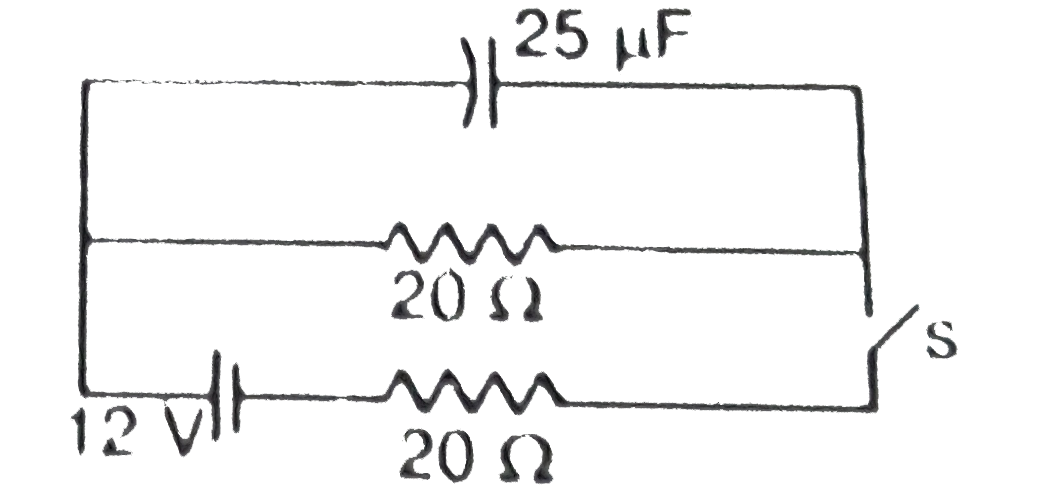The switch S shown in figure is kept closed for a long time and is then opened at t=0.Find the current in the middle 10(Ω)resistor at t=1.0ms.
 Solution in Tamil
Solution in Tamil
In steady state condition,
Potential difference across the capacitor
=25μF
Potentiald⇔erenceacrossthe10Ω<br>resistance<br> = 12/5 xx 10 = 24V <br> Q = (Q_0) e^(t/RC) = V xx C (e ^-t/RC))<br> = 24 xx 25 xx (10^-6)e^(-4) <br> = 24 xx 25 xx (10^-6) xx 0.0183 <br> 10.9 xx (10^-6) C <br>Char≥bythe∩aci→raftertimet'<br>Current∈the10Ωresis→r<br> = (10.9 xx (10^-6)C/1 xx (10^-3) sec) = 11 mA.
Topper's Solved these Questions
- ELECTRIC CURRENT IN CONDUCTORSBOOK - HC VERMACHAPTER - ELECTRIC CURRENT IN CONDUCTORSEXERCISE - objective 2
9 Videos
- DISPERSION AND SPECTRABOOK - HC VERMACHAPTER - DISPERSION AND SPECTRAEXERCISE - Exercises
11 Videos
- ELECTRIC CURRENT THROUGH GASESBOOK - HC VERMACHAPTER - ELECTRIC CURRENT THROUGH GASESEXERCISE - Exercise
23 Videos
Similar Questions
Electrons are emitted by a hot filament and are accelerated by an electric field as shown in figure .The two stops at the left ensure that the electron beam has a uniform cross-section.

View SolutionA flint glass prism and a crown glass prism are to be combined in such a way that the deviation of the mean ray is zero. The refractive index of flint and crown glasses for the mean ray are 1.620 and 1.518 respectively. If the refracting angle of the flint prism is 6.0∘, what would be the refracting angle of the crown prism ?
View SolutionA discharge tube contains helium at a low pressure. A large potential difference is applied across the tube. Consider a helium atom that has just been ionized due to the detachment of an atomic electron. Find the ratio of the distance travelled by the free electron to that by the positive ion in a short time dt after the ionization.
View SolutionIn the circuit arrangement shown in figure, the switch S is closed at t=0. Find the current in the inductance as a function of time? Does the current through 10Ω resistor vary with time or remains constant.

View SolutionIn the circuit shown, switch S is closed at time t = 0 . Find the current through the inductor as a function of time t .
View SolutionIn Fig. switch S is closed for a long time. At t = 0 , if it is opened, then
View SolutionIn the given at t = 0 , switch S is closed. The current through the 10 Omega resistor at any instant t(0 lt t lt oo) will be
View Solutionthere in no current part of this circuit for time t lt o . Switch S is closed at t = 0 . Current through the 6 Omega resistor
View SolutionIn the circuit shown, the switch S has been close for a long time. At time t=0 the switch is opened. It remains open for a long time T , after which it is closed again.
View SolutionA capacitor of capacitance 6 mu F and initial charge 1.60 muC is connected with a switch S and resistors as shown in figure-3.346. If switch is closed at t= 0 , then the currenithrough · resistor of 4 Omega at t = 16 mu s is
View SolutionIn the circuit shown in figure switch S is closed at time t=0

Current I from the battery at time t is given by
View SolutionThe switch S shown in figure is kept closed for a long time and then opened at t = 0, then the current in the middle 20Ω resistor at t=0.25 ms is :

View SolutionThe switch S is closed in the circuit shown at time t=0 . The current in the resistor at t=0 and t =oo are respectively .
View SolutionIn the circuit arrangement shown in figure, the switch S is closed at t = 0 . Find the current in the inductance as a function of time? Does the current through 10 Omega resistor vary with time or remains constant.
View SolutionIn the circuit shown, switch S is closed at time t = 0 . Find the current through the inductor as a function of time t .
View SolutionA capacitor of capacitance 6 mu F and initial charge 160 muC is connected with a switch S and resistors as shown in figure-3.346. If switch is closed at t= 0 , then the currenithrough · resistor of 4 Omega at t = 16 mu s is
View Solution
